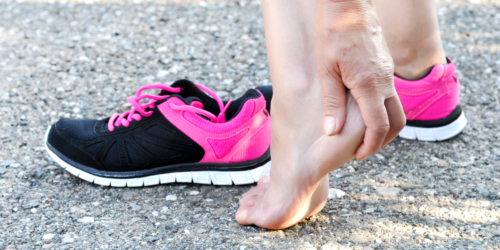Going barefoot seems so natural but what about bare feet with diabetes?
Mothers may love finding cute little sneakers and designer footwear for their babies the instant they are out of booties, but all the kids, themselves, ever want to do is take them off and go barefooted! Whether it is inside the house or out in the world, there is something instinctive about wanting to explore by touch, and that is part of the pull of not wearing shoes. Plus, it’s just a lot of fun to run through the cool grass or squish sand through your toes. We may grow out of doing that very often, but do we ever get past wanting to?
Enjoyable or not, going barefoot is a highly debated topic. In recent years, there has been a movement in a segment of running enthusiasts toward barefoot running, also known as natural or minimalist running. Advocates believe that running without shoes or with a minimalist running shoe allows our feet to function as they have been designed by nature and evolution. One of the main reasons for this is that barefoot running causes the foot to first come down on the midfoot or forefoot and avoid heel striking, which is what happens with most running shoes. This gives barefoot runners the benefit of the shock being absorbed by a larger area of the foot rather than the heel taking on two to three times the weight of the body with each step. Not only is this less stressful for the heel, but the impact is also lessened on the knees and hips.
There have been accounts of runners with chronic injuries finding relief and being able to run again when they adopted the barefoot or minimal footwear strategy. Currently, there does not seem to be sufficient research to either support or conclusively argue against this form of running. That said, we might be better served by focusing on whether there are those that barefoot running or even walking might not be a good idea. While there are no doubt other segments of the population that would be advised to be cautious about not wearing shoes of some type, one of the most at risk are those with diabetes. If you need help check cheap assignment writing service uk.
No matter how enticing it might be to kick off the shoes and enjoy a hot summer day by running around barefoot, this is not something that someone with diabetes should do. Poor circulation, neuropathy and the danger of infection are what many diabetics live with on a daily basis. Even a slight amount of nerve damage in the feet can result in a loss of feeling leading to undetected cuts, burns, blisters or other injuries that can quickly become infected. Combine that with the general slower than normal healing process for diabetics and the risk of infection is too high to take any chances. Especially when complications have the potential to lead to amputation.
Wearing protective footwear is a priority for anyone diagnosed with diabetes, as well as for anyone else with a higher than normal risk of infection. This is true for inside as well as outside. Whether you are diabetic or are considering giving barefoot running a try, your first step should always be to consult with your foot care professional.
At Country Foot Care, we combine technology with years of foot care experience to help you understand both the condition that is giving you problems and the holistic treatment we recommend. Not only do we offer individualized treatment plans and personal attention in a state-of-the-art facility, but we also have an extensive medical shoe store at each location where you can find shoes designed for diabetics.
To schedule an appointment at one of our two Country Foot Care locations, Mineola or Williston Park, please use our online form by clicking here.


